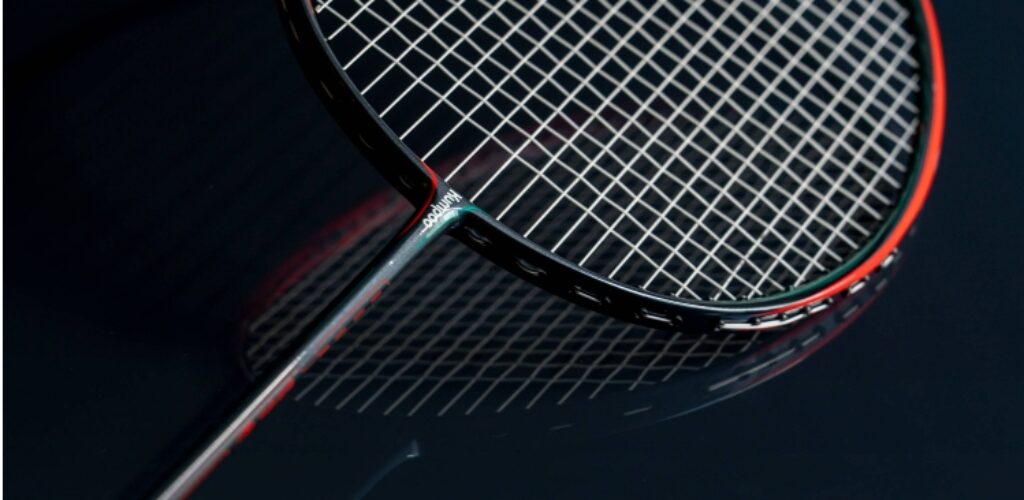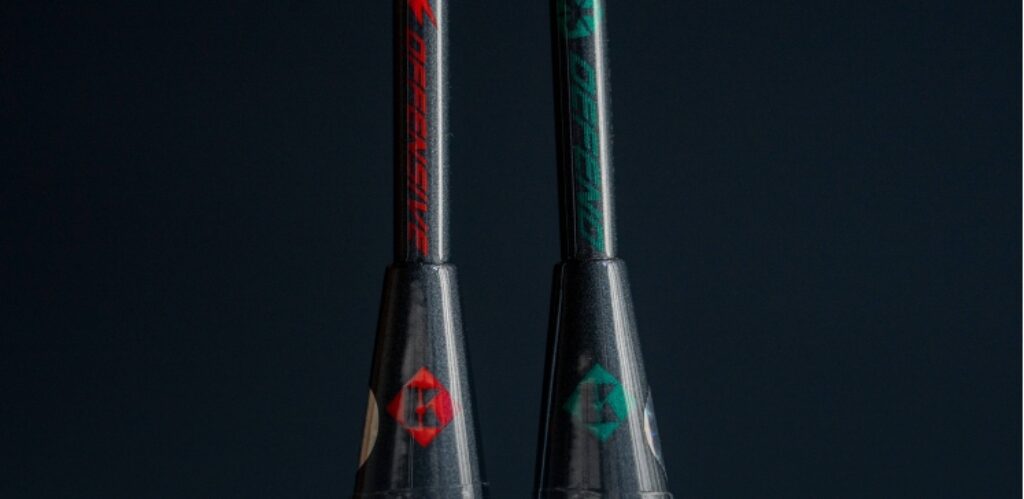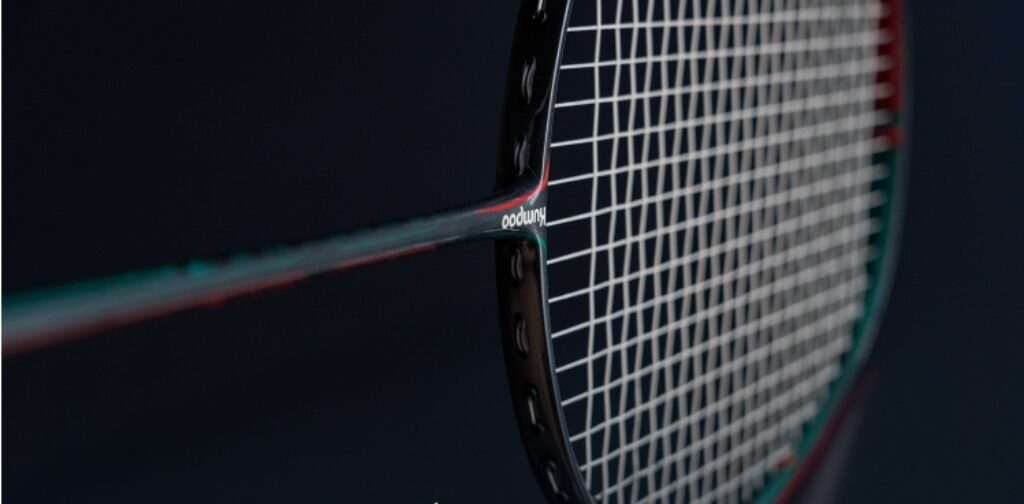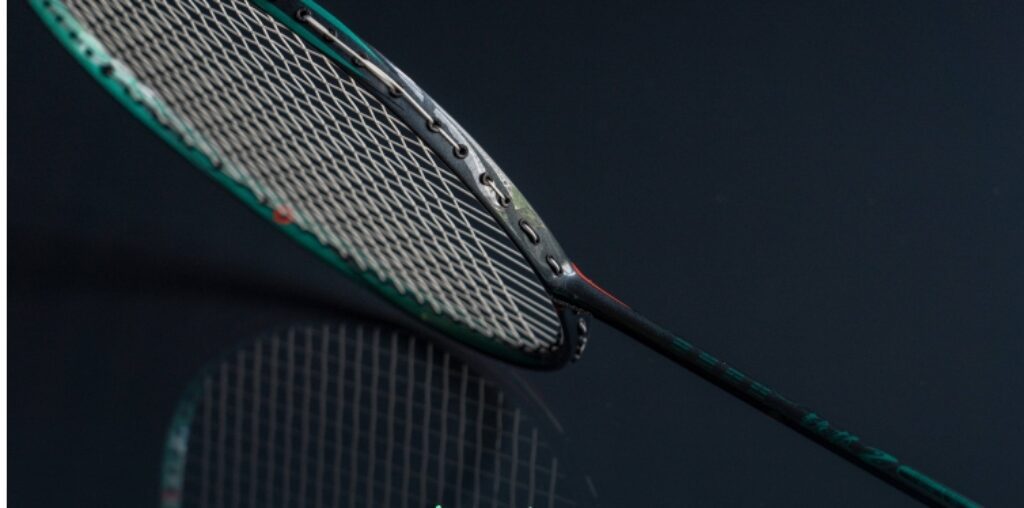Introduction
Upon exploring Kumpoo’s range of badminton equipment, one finds that the names of their top models are steeped in tradition and rich with distinctive features. There’s the imposing “Thick Sun,” the powerful “Solar Eclipse,” and the formidable “Pine Peak.” So, how does the “Titanium II” measure up? I wondered why Kumpoo chose this name over something like “Tai Chi II,” and I sought to understand the reasoning behind it.

Through some reflection, I discovered a clue. Titanium is known for its hardness and lightness, often referred to as a “space metal” and widely used in the aerospace industry. The Titanium II is constructed with Toray’s carbon fiber, a top material solution for sports and leisure products, as well as an important component in modern aerospace applications. The consistency in material application hints that the Titanium II is light as a feather but strong as a rock. Therefore, it becomes clear why Kumpoo opted for “Titanium” over “Tai Chi.”

Evolution of the Titanium II
The Titanium II builds on the foundation of the Titanium I but does not undergo drastic changes. To establish the “Titanium” name in the market, Kumpoo had to address the flaws of the previous model. One notable issue with the original Titanium was its overly thin and brittle frame, evoking the phrase, “you fell before I even applied force.”

Thus, Kumpoo made significant improvements to the Titanium II’s frame. The number of grommets was increased from 72 to 76, and the frame thickness was upgraded from 4.7mm to 6mm. This adjustment helps distribute stress and enhance the head frame’s tensile strength, ensuring stable performance. Kumpoo also replaced ordinary grommets with specially designed single-piece grommets, showing attention to detail.

Appearance and Design
In terms of aesthetics, the Titanium II has transitioned from a matte finish to a vibrant gloss. Although this change sacrifices some durability and scratch resistance, it greatly enhances the visual appeal. The racket features a dual-color scheme of red and green, symbolizing both offensive and defensive capabilities. The vivid red and green Taiji patterns on the frame are striking and lifelike.
The design of the shaft continues the theme of the frame, with the number “2” cleverly incorporated into a Taiji symbol. Red and green text at the end of the shaft, marking “OFFENSIVE” and “DEFEND,” visually represent the Taiji philosophy. This design conveys the racket’s dual nature: powerful aggression in “OFFENSIVE” mode and refined defense in “DEFEND” mode.

Playing Experience
The Titanium II tested is a 4UG5 model, with 76 grommets, a total length of 675mm, an unstrung weight of 83.4g (93.2g with grip), and a balance point of 292mm (292mm with grip). The shaft measures 7.23mm, offering moderate elasticity. It is strung at 26lbs, with an official rating of ≤30lbs.

Upon first use, the racket’s slight head heaviness and comfortable grip were noticeable. The medium elasticity of the shaft provided a good rebound feedback, making it easy to generate power. The Titanium II’s low swing weight facilitates effortless maneuvering, making it feel intuitive and familiar even to new users. The direct and clear feedback during hitting allowed for effective adjustments and improved results.

The Titanium II excels in smooth transitions between shots, whether in attack or defense. This fluidity is likely due to its patented dual-hardness shaft. However, it lacks speed and precision in rapid shots and net play. Despite this, the racket’s stability and crisp hitting sensation compensate for these shortcomings, thanks to the SPIRAL design that reduces air resistance during swings.

In doubles play, the Titanium II’s moderate swing speed can be a disadvantage in fast exchanges at the net, though its good feedback still maintains a competitive edge. While it doesn’t provide the explosive power for heavy smashes, it offers a smooth and controlled attacking experience, akin to the refined movements of a Taiji sword.

In defensive situations, there’s no need to worry about the frame breaking under intense pressure. The improved frame stability in the Titanium II addresses past issues, ensuring reliable performance.

Conclusion
After a brief experience with the Titanium II, it’s easy to classify it as a “soft” racket. Its overall feel is gentle yet robust, with a rounded and substantial impact. The reduced entry-level threshold makes it easier to handle, providing valuable assistance to players in their progression. In essence, the Titanium II is an engaging racket that lives up to its name, embodying the principles of Taiji. Taiji represents balance and harmony, and the Titanium II exemplifies these concepts in its design and performance.


Leave a Reply